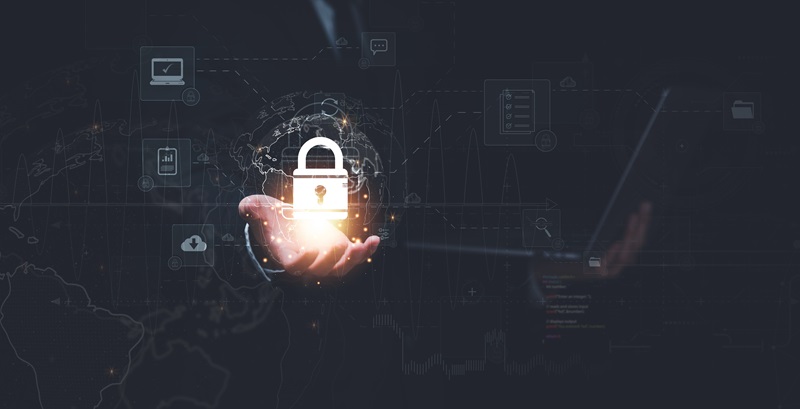Hidden vulnerabilities within IT infrastructure are akin to unseen fissures that cybercriminals can exploit unnoticed, causing significant damage. By examining instances of cyberattacks, one can grasp the severity and cunning exploitation of these weak spots. Such analysis highlights where defenses are lacking and stresses the urgency of bolstering security measures to thwart data breaches and system infiltrations.
To safeguard against these threats, it is crucial to identify and remedy these security blind spots. Regular system updates, vigilant monitoring, employee cybersecurity training, and robust incident response protocols can fortify an organization’s defenses. As technology evolves, so do the techniques of cyber adversaries, making continuous vigilance and adaptive security strategies imperative in the fight against cybercrime. By learning from past breaches, businesses can close gaps in their security armor and better protect their digital assets from malicious actors.
Incident Analysis: A Look at Real-World Cyberattacks
Incomplete Device Protection and Weak Authentication
An IT company found itself at the mercy of a ransomware attack due to inadequate device protection. This cyber onslaught didn’t happen overnight; it was predicated on a series of security slip-ups that went unnoticed over time. Weak authentication protocols provided a thin veil easily pierced by intruders. The most glaring deficiency was the lack of a broad security view for the Security Operations Center, which prevented timely identification and response to the anomalous activities that preceded the attack.
Similarly, another aspect that played into the attackers’ hands was the assumption that traditional security measures were sufficient. Hackers often disguise their maneuvers as legitimate activities, capitalizing on unmonitored admin actions to gain extended access to company resources, which makes it vital for SOC teams to have full visibility into every device connected to their network.
Exploitation of Security Misconfigurations
When a manufacturing firm experienced a data breach, it was quickly discovered that the root cause lay in critical security misconfigurations, which had left key entry points inadequately defended. Attackers entered through these overlooked vulnerabilities and used brute force attacks to pry open further layers of security. Once inside, over one hundred devices fell victim, impacting the organization’s ERP system.
What exacerbated the situation was the attackers’ decision to eliminate backup data. This not only increased the time required for recovery but also accentuated the financial losses. The breach was a stark warning about the dire importance of refining security configurations, strengthening authentication processes, and ensuring that backups are both secure and regularly updated.
Exposed Assets and Compromised Credentials
In the retail sector, a company suffered a significant blow when cybercriminals exploited publicly exposed assets coupled with weak authentication. The attackers went straight for the domain controllers and effortlessly navigated through the network by creating and erasing accounts, deftly covering their tracks. Consequently, sensitive data was exfiltrated and found its way to dark web markets, causing not just financial damage but also eroding customer confidence.
Strikingly, the intruders employed tools designed for threat emulation and password cracking, which are commonly used by security teams for legitimate purposes. Their nefarious use in this context to maintain network persistence underscores the sophistication of modern cyberattack techniques and the necessity for enterprises to constantly reassess and upgrade their cybersecurity posture.
Combating Cyber Threats: Integrating Comprehensive Security Measures
The Role of Extended Detection and Response (XDR)
Extended Detection and Response (XDR) stands at the vanguard of cybersecurity solutions, integrating multiple security layers, including network, endpoint, server, cloud, and email protections. By unifying these defenses under a single strategic framework, XDR offers security teams the comprehensive visibility they need to detect emerging threats with greater accuracy and speed. Furthermore, XDR provides the tools to not just respond reactively but also to proactively hunt for potential threats, thus reducing the attackers’ window of opportunity to exploit any security gaps.
Adopting XDR is like finishing a puzzle; it fills in the missing pieces and creates a unified picture of an organization’s security landscape. Through the correlation and analysis of data from various sources, XDR ensures that nothing remains hidden to the vigilant eyes of the SOC, facilitating swifter containment and remediation of threats before they can cause irreversible damage.
Developing a Unified Defensive Strategy
Robustness and interconnectivity are fundamental to a modern defensive strategy in cybersecurity. A network’s resilience hinges on the seamless integration of its security components, which must function synergistically to thwart cybercriminals’ multifaceted tactics. Furthermore, in an ever-evolving digital battleground, staying static is not an option. Security measures must adapt and innovate continuously, matching the pace of the attackers’ ingenuity.
Constructing such an impervious bulwark requires not only the latest technological tools but also an ongoing commitment to best practices in security policy, user education, and incident response planning. It’s a colossal endeavor demanding that organizations commit fully to the protection of their digital assets and the privacy of their clients, leaving no stone unturned in the fight against cyberattacks.

